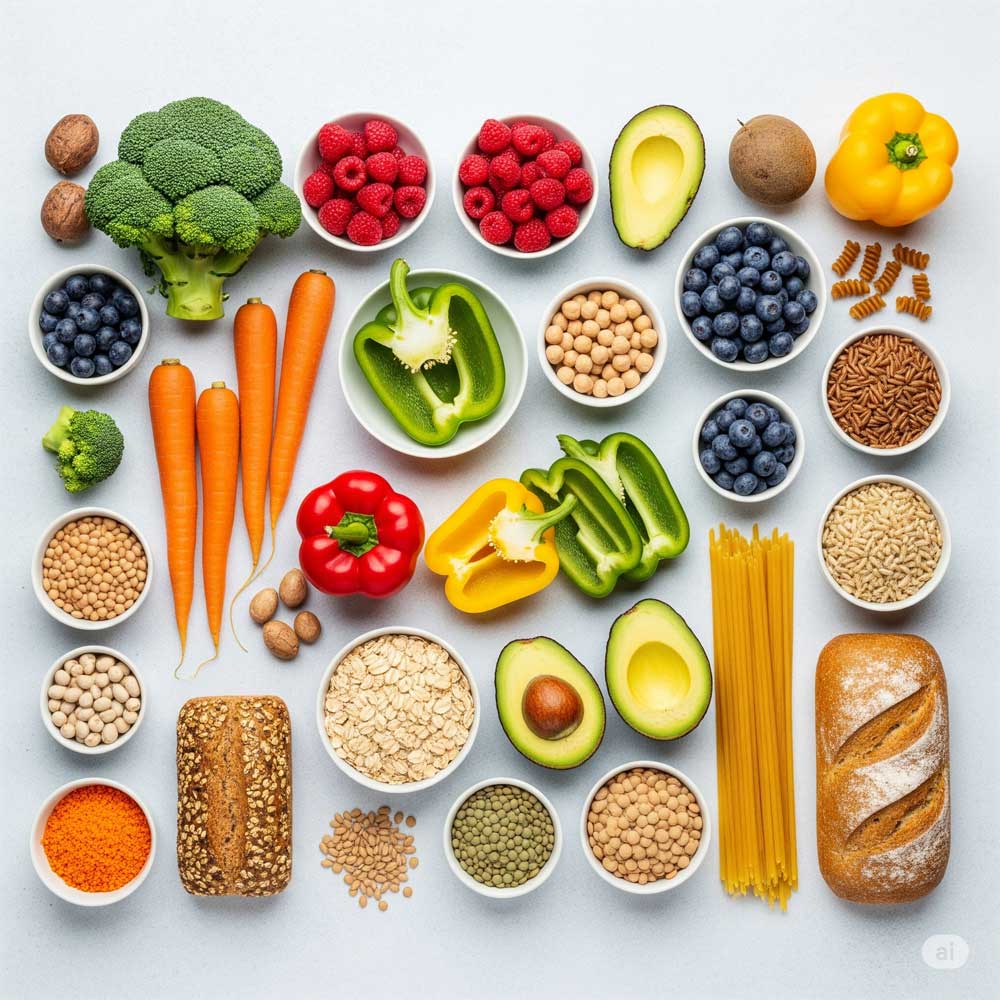🥦 The Ultimate Guide to Plant-Based Nutrition for Beginners
How to Start a Balanced and Healthy Plant-Based Lifestyle
📝 Introduction
Plant-based nutrition is more than just a trend — it’s a lifestyle choice backed by science. Studies show that a well-planned plant-based diet can reduce the risk of heart disease, type 2 diabetes, and certain cancers, while promoting healthy weight management and overall well-being.
If you’re curious about going plant-based but don’t know where to start, this beginner’s guide will give you the tools, tips, and confidence you need to make the transition smoothly.
1. 🌱 What is a Plant-Based Diet?
A plant-based diet focuses on whole, minimally processed plant foods, including:
-
Fruits and vegetables
-
Whole grains
-
Legumes (beans, lentils, chickpeas)
-
Nuts and seeds
-
Plant-based oils
It’s not necessarily vegan — some people still include small amounts of animal products — but the emphasis is always on plants.
💡 SEO Keyword: plant-based diet definition
2. 💪 Key Nutrients to Focus On
When following a plant-based diet, you need to pay attention to certain nutrients:
-
Protein – Found in beans, lentils, tofu, tempeh, seitan, quinoa
-
Iron – Found in spinach, lentils, pumpkin seeds; absorb better with vitamin C-rich foods
-
Calcium – Found in fortified plant milks, kale, broccoli, almonds
-
Vitamin B12 – Found in fortified foods or supplements
-
Omega-3 Fatty Acids – Found in chia seeds, flaxseeds, walnuts
💡 SEO Keyword: plant-based nutrition essentials
3. 🛒 How to Build a Balanced Plant-Based Plate
A healthy plant-based meal should include:
-
Half a plate: Vegetables & fruits
-
One quarter: Whole grains (brown rice, quinoa, oats)
-
One quarter: Plant-based proteins (lentils, beans, tofu)
-
A small amount of healthy fats (avocado, olive oil, nuts)
💡 SEO Keyword: balanced plant-based meals
4. 🥗 Beginner-Friendly Plant-Based Foods
Staples to stock your kitchen:
-
Chickpeas (for hummus, salads, stews)
-
Brown rice and quinoa (easy to cook, versatile)
-
Frozen veggies (budget-friendly and long-lasting)
-
Oats (for breakfast or baking)
-
Nut butters (healthy fats and protein)
💡 SEO Keyword: easy plant-based foods
5. ⏳ Transitioning to a Plant-Based Diet
Tips to make it easier:
-
Start with one plant-based meal a day
-
Experiment with new recipes weekly
-
Replace dairy with plant-based alternatives (almond milk, oat milk)
-
Join plant-based cooking communities online for inspiration
💡 SEO Keyword: how to start a plant-based diet
6. ❗ Common Mistakes to Avoid
-
Relying too much on processed vegan junk food
-
Not eating enough calories (plants are less calorie-dense)
-
Ignoring nutrient balance
-
Making the change too abruptly without planning
💡 SEO Keyword: plant-based diet mistakes
🌟 Final Thoughts
Switching to a plant-based diet doesn’t have to be overwhelming. Focus on adding more plants to your meals, exploring new flavors, and ensuring you get all your essential nutrients.
Over time, you’ll likely notice improved energy, better digestion, and a greater appreciation for wholesome, natural foods.
Remember: It’s a journey, not a race — take it one meal at a time.
